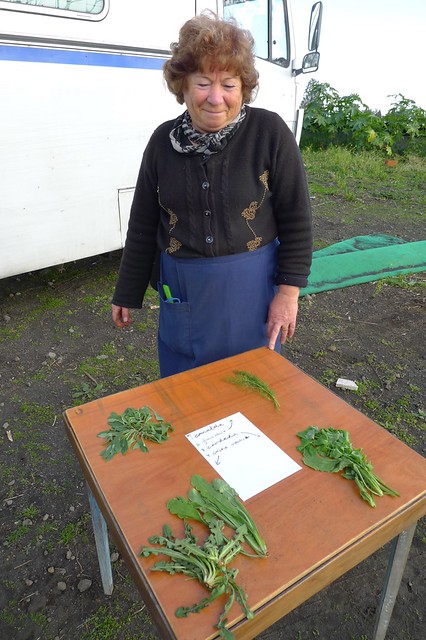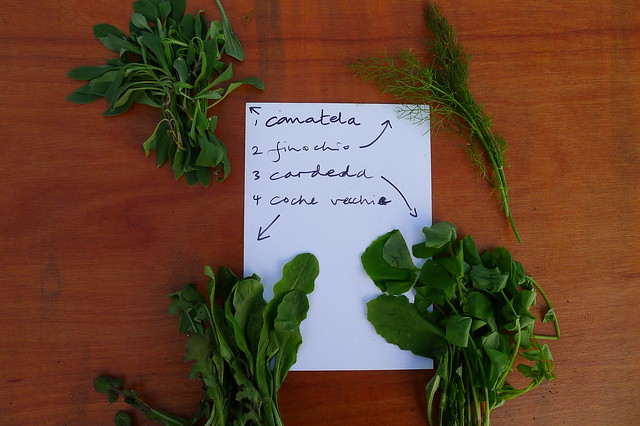Passopomo – Rosa
Passopomo has many friends. One of them is Rosa, who arrives one morning, equipped with several plastic bags and a knife, to go foraging for wild food. In her seventies, she is a fountain of knowledge about edible plants and how to use them. Frank, Giulia and I go on a walk with her and we return with a big bag full of various wild plants.
Her advice is to blanch them and them eat them with pasta and a bit of olive oil. They taste delicious – like spinach, but stronger and with that unique flavour of wild food. There is a plant that looks like fennel but isn’t (and it’s not edible), and then there is fennel too. I find it impossible to tell them apart by sight. Likewise with some of the dandelion-like looking leaves, of which there are some that she deems ok to eat and others not. We come past a patch of chickweed and I tell her that that is edible too, but she won’t even try a sprig, despite my protestations that it is full of vitamin C. She was taught to forage by her grandfather, and whatever he didn’t tell her she won’t touch.
We invite Rosa for lunch, but she declines, saying she needs to get back to her disabled daughter to cook for her.
While we sit and eat, Rosa is still foraging. At some point I see her up in an olive tree, hitting the higher branches with a stick, another time, she’s picking the mandarins off the neglected trees in the lower orchard. We are told that when she was younger she used to collect a lot more and if she had a surplus, she used to sell it too, making jams from the mandarins and the oranges, collecting chestnuts, wild plants and truffles.
Posted in Uncategorizedwith 2 comments.



Grazie Tante, Pippo. Era un plazer encontrarti
Ruth e Frank
1. cannatedda – Silene vulgaris (Moench.) Garcke ssp. angustifolia (Miller) Hayek
2. finocchietto selvatico – Foeniculum vulgare Miller ssp. piperitum (Ucria) Coutinho
3. cardedda – Sonchus oleraceus L.
4. coscia di vecchia – Hypochoeris neapolitana DC.